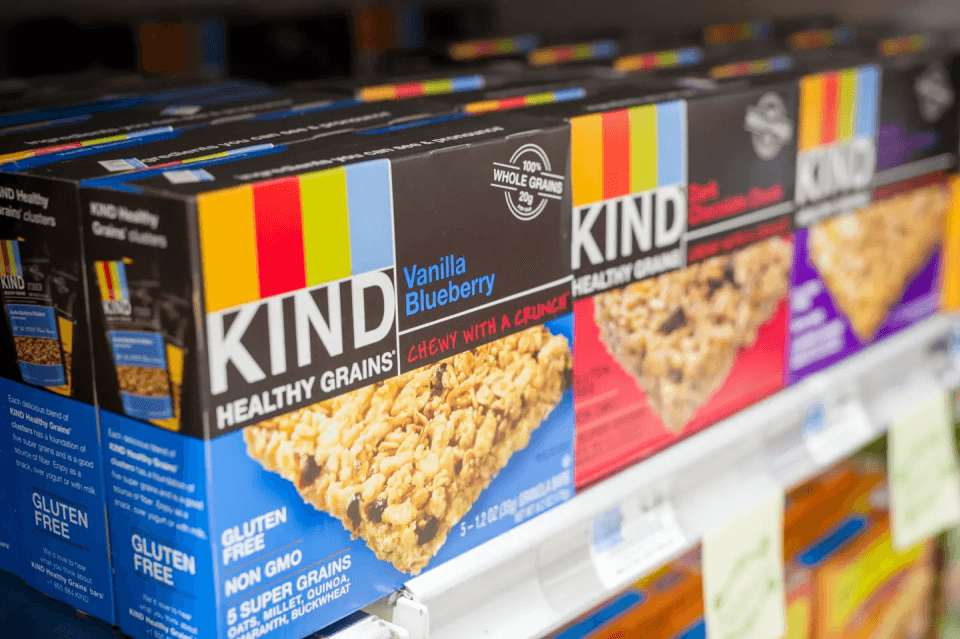The Alternative Protein Litigation Trap: How Regulatory Ambiguity Created a Shakedown Industry—And How to Make Your Labels Lawsuit-Proof

The Pattern Everyone Sees But Nobody Names
Between September 2024 and June 2025, at least five major alternative protein companies faced class action lawsuits over protein labeling compliance. Beyond Meat settled for $7.5 million. Huel, OWYN, PEScience and Naked Nutrition are actively defending similar claims. The allegations follow an identical pattern: front of pack protein content claims without corresponding PDCAAS corrected Daily Value percentages in the Nutrition Facts Panel.
This isn't a compliance crisis. It's a business model. And unless you understand how it works, your company is next.
The narrative emerging from these cases positions this as corporate negligence: companies cutting corners, ignoring regulations, misleading consumers. But that narrative misses the fundamental truth. This is regulatory ambiguity being weaponized by plaintiff attorneys who found a lucrative gap between what FDA requires and what courts will certify as a class action.
I've spent 35 years working across conventional, plant based and emerging protein technologies as a formulator and regulatory expert. What I'm witnessing isn't isolated bad actors making careless mistakes. It's systematic exploitation of unclear regulatory triggers, where good faith compliance efforts become litigation targets because companies and plaintiff attorneys interpret the same regulations differently.
- What Nacarino v. Kashi actually decided
- The regulatory ambiguity attorneys exploit
- Dave's Killer Bread and the post Nacarino trap
- How ambiguity enabled a litigation business model
- Why providing both numbers is transparent
- The strategic defense companies miss
- AI powered composite amino acid analysis
- PDCAAS vs DIAAS and why it still matters
- Compliance infrastructure as strategy
- Three practical paths and next steps
What Nacarino v. Kashi Actually Decided and Why Companies Still Get Sued
In August 2023, the Ninth Circuit issued what should have been a clarifying decision in Nacarino v. Kashi. The court ruled that manufacturers can use the nitrogen method (Kjeldahl method) to calculate protein content and can make quantitative protein claims on front of pack labeling. The regulations explicitly permit this under 21 CFR 101.9(c)(7).
But there's a critical trigger provision in 21 CFR 101.9(c)(7)(i): “if a protein claim is made on the label or in labeling of a food... the percent of the Daily Reference Value for protein must be declared.” And that Daily Value must be calculated using PDCAAS, which accounts for both amino acid profile and digestibility.
The Ninth Circuit held that compliant labels can show protein quantity on the front using the nitrogen method as long as the Nutrition Facts Panel includes PDCAAS corrected percent Daily Value when a protein claim is made.
Here's where the trap opens: What exactly constitutes a protein claim that triggers the PDCAAS percent DV requirement
The Regulatory Ambiguity Plaintiff Attorneys Exploit
Under 21 CFR 101.13, nutrient content claims include statements like “Good Source of Protein,” “High in Protein,” or “Excellent Source of Protein.” These clearly trigger the PDCAAS percent DV requirement.
But what about a simple quantitative statement like “15g Protein” on the front of a plant based protein bar
This is informational content about the actual amount of protein present, measured by the nitrogen method as explicitly permitted by FDA. It is not a nutrient content claim under 21 CFR 101.13. Therefore PDCAAS percent DV disclosure is not required.
Any prominent protein statement on front of pack is a protein claim that triggers 21 CFR 101.9(c)(7)(i). By including “15g Protein” prominently, you must disclose PDCAAS corrected percent DV in the Nutrition Facts Panel.
This is genuine ambiguity about regulatory triggers, where reasonable professionals disagree about interpretation. Courts continue to certify classes based on the aggressive interpretation, even when companies believe they followed FDA allowances.
Dave's Killer Bread: The Ongoing Trap Post Nacarino
Multiple class actions were filed alleging that products display protein content on front of pack labels like “5g Protein” without corresponding PDCAAS corrected percent Daily Values in the Nutrition Facts Panel. In September 2024, a California federal judge granted class certification, allowing these claims to proceed. The company argues these are informational statements about quantity, while plaintiffs argue any such statement triggers PDCAAS disclosure. The court allowed the class to move forward.
This pattern is hitting plant based protein companies where PDCAAS scores can be lower than animal proteins. If your labels show protein content prominently but your Nutrition Facts Panel lacks PDCAAS corrected percent DV, assess your exposure now and schedule a regulatory risk assessment.
How Bad Regulatory Ambiguity Enabled a Litigation Business Model
- Identify targets: plant based protein companies with front of pack protein statements and no PDCAAS percent DV in the Nutrition Facts Panel
- Find named plaintiffs: consumers who purchased and claim harm from alleged protein misrepresentation
- File class action in California federal court alleging violations of state consumer protection laws
- Force a choice: spend large sums defending ambiguous interpretation or settle for a smaller amount
- Apply pressure: most startups cannot endure prolonged litigation even with reasonable interpretations
The economics push venture backed companies toward settlement regardless of fault. Ambiguity sustains the model.
Why Providing Both Numbers Is Transparent
The FDA framework separates quick reference front of pack information from full context in the Nutrition Facts Panel. When a label states “20g Protein” on the front and includes “14 percent DV PDCAAS corrected” in the panel, consumers receive complete information. These statements are complementary, not contradictory.
The Strategic Defense: Use Science to Nullify the Claim
Make yourself lawsuit proof by including PDCAAS corrected Daily Values whenever you make a protein statement, regardless of your interpretation of the trigger. When both quantity and PDCAAS corrected percent DV appear, the asserted theory collapses because the full context is present.
How AI Powered Composite Amino Acid Analysis Becomes Your Legal Defense
Accurate PDCAAS for blends requires ingredient level amino acid profiles, composite calculations, limiting amino acid identification, processing adjustments and matrix effects. Traditional lab testing for every iteration is slow and expensive. AI platforms compute composite amino acid profiles, model digestibility impacts and generate compliant percent DV disclosures in minutes, integrated directly into formulation workflows.
- Ingredient level amino acid profiling from validated databases
- Blend calculations for real formulations like pea, rice and hemp
- Limiting amino acid detection tied to human requirements
- Processing and matrix adjustments that reflect finished product reality
- Regulatory reasoning aligned with 21 CFR and case law
PDCAAS vs DIAAS: An Archaic Foundation That Still Governs Labels
PDCAAS relies on rat based digestibility and has scientific limits. DIAAS measures ileal digestibility of indispensable amino acids and is a more precise approach used in other markets. PDCAAS remains the operative US standard under 21 CFR 101.9(c)(7)(ii). Modern platforms can adapt when methodology changes, but today PDCAAS drives compliance.
Compliance Infrastructure as Offensive Strategy, Not Overhead
Companies that build superior compliance infrastructure can make stronger, defensible claims and move faster from formulation to market. This becomes a moat as core product technologies converge. Think of compliance velocity as an advantage that compounds over time.
Launch with “15g Plant Based Protein” on front. Eighteen months later, face a demand letter and costly litigation or settlement while competitors advance.
Calculate PDCAAS in development. Disclose quantity and PDCAAS corrected percent DV. Become the trusted brand consumers, retailers and investors favor.
Why Traditional Services Do Not Scale
Expert capacity is limited and iteration is expensive. The solution is infrastructure that scales expertise, much like legal research and tax compliance moved from bespoke services to software backed systems.
Take Action: Three Paths Based on Where You Are
- Path 1: Hope you are not next. Maintain current labels based on your interpretation and accept high risk.
- Path 2: Retreat to safety. Remove protein statements and concede marketing ground.
- Path 3: Build offensive infrastructure. Implement AI based PDCAAS and amino acid profiling to be scientifically bulletproof and market with confidence.
The litigation wave of 2024 to 2025 is not an aberration. As novel formulations and bold protein statements proliferate, ambiguity will continue to be exploited until companies make cases uneconomic to file. The winners will use science backed disclosure to turn compliance into advantage.
Stop the trolls with science. Make PDCAAS your advantage, not your liability. Infrastructure problems require infrastructure solutions. It is time to build them.
Mark Haas is the founder and CEO of RegulateCPG, an AI powered compliance infrastructure platform for food and beverage companies. With 35 years of experience across FDA, USDA, CFIA and EU frameworks, he has formulated more than 200 brands representing over two billion dollars in market value, with deep expertise in amino acid analysis and PDCAAS methodology for alternative protein label claims.

